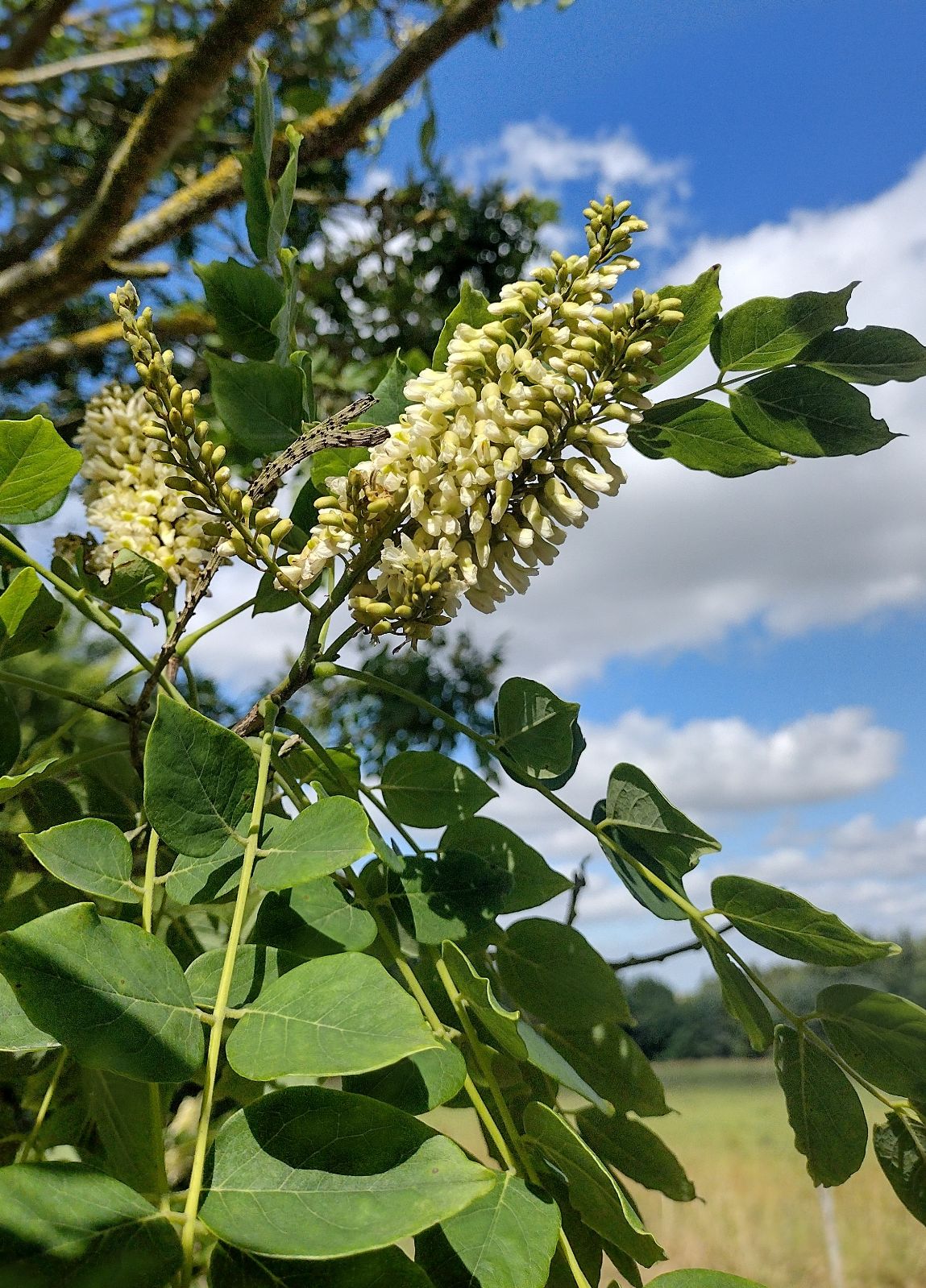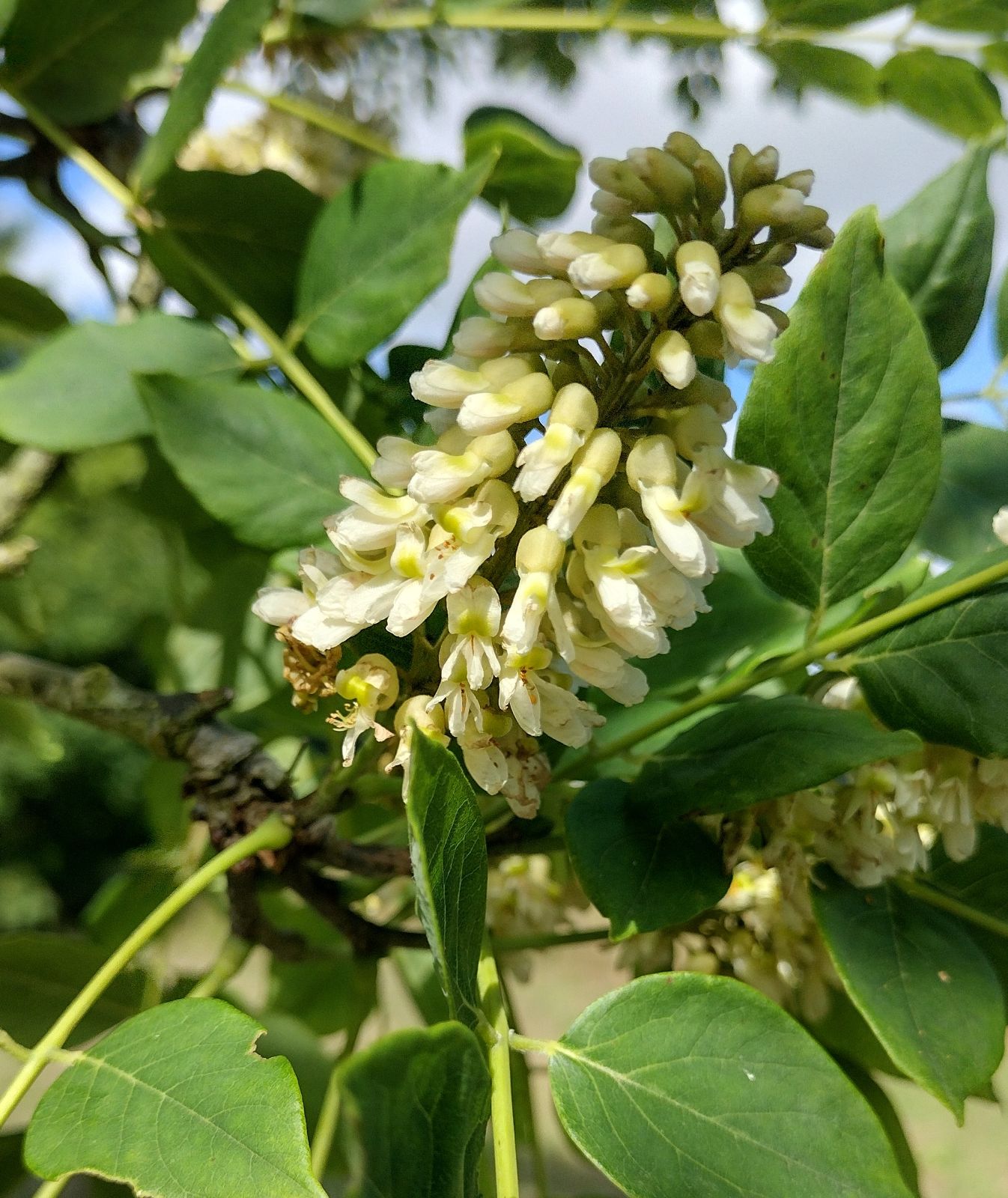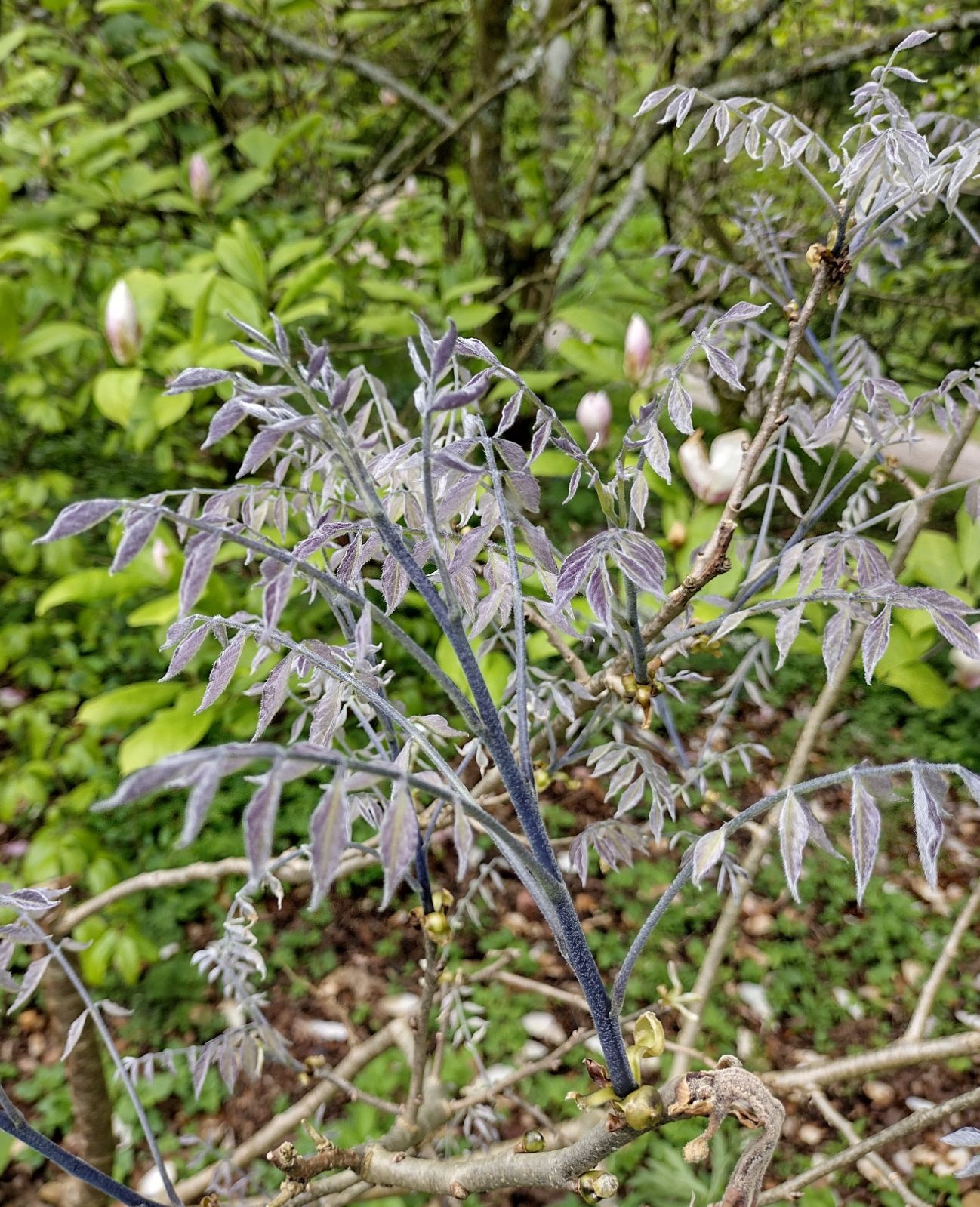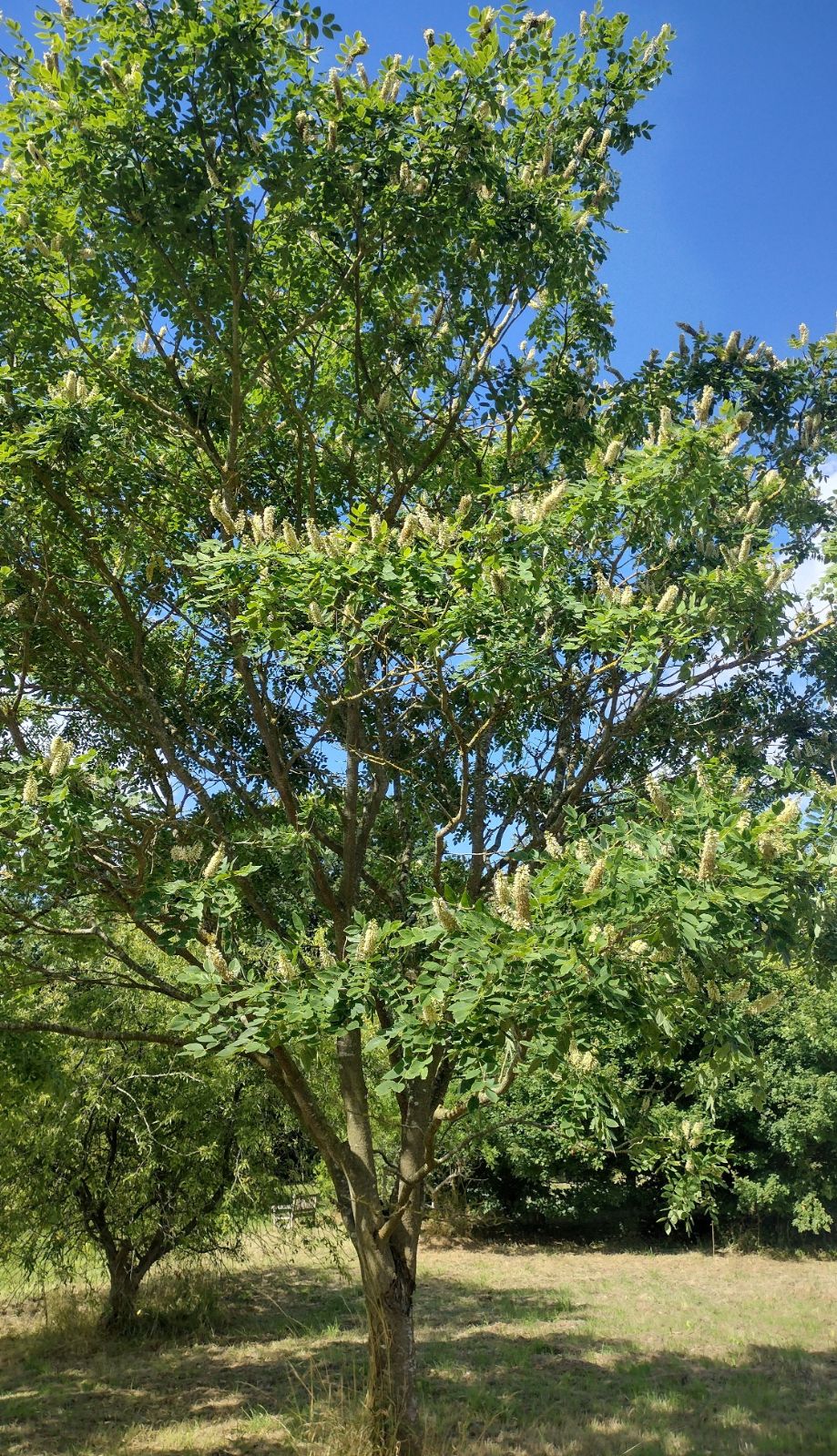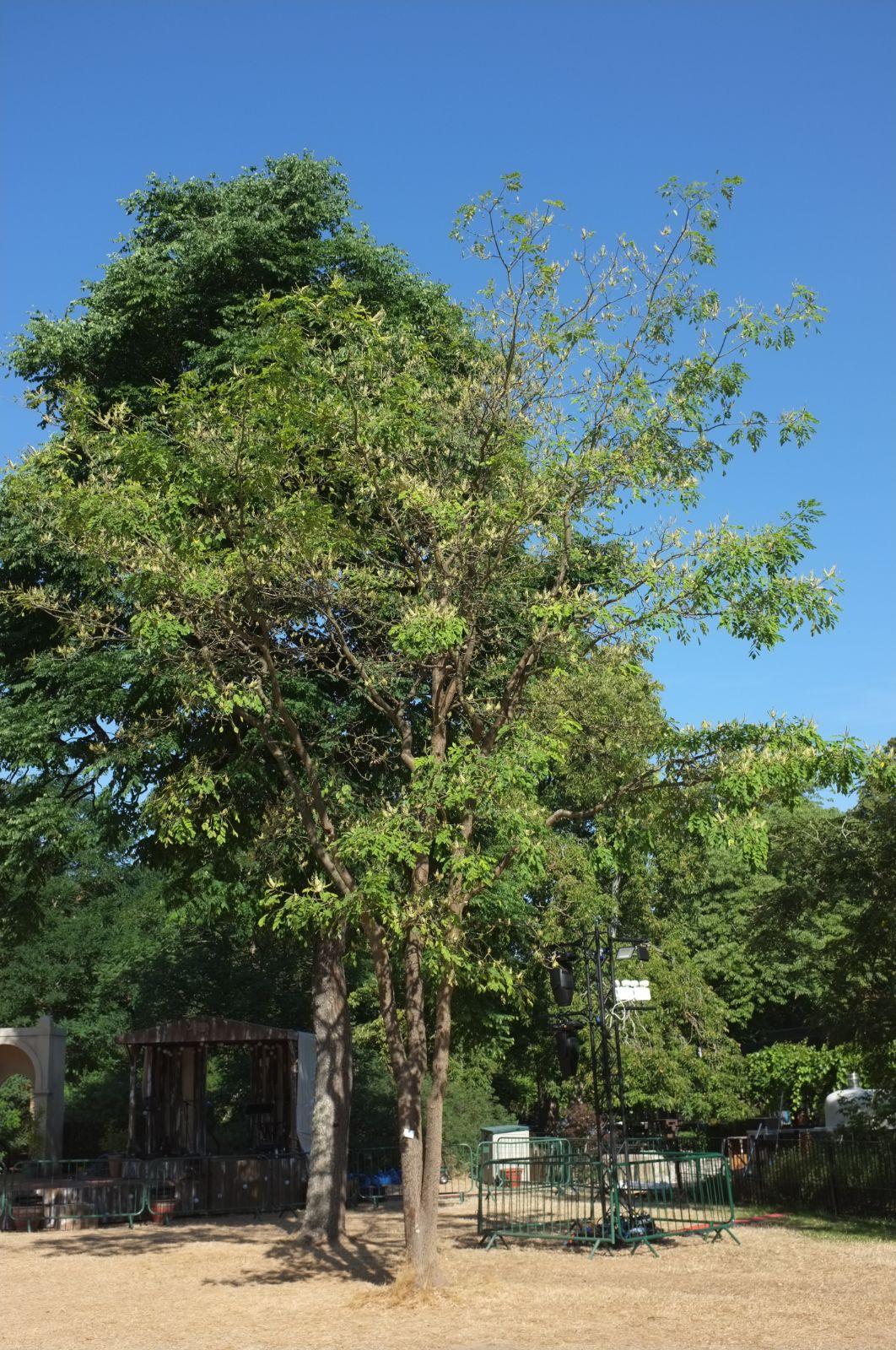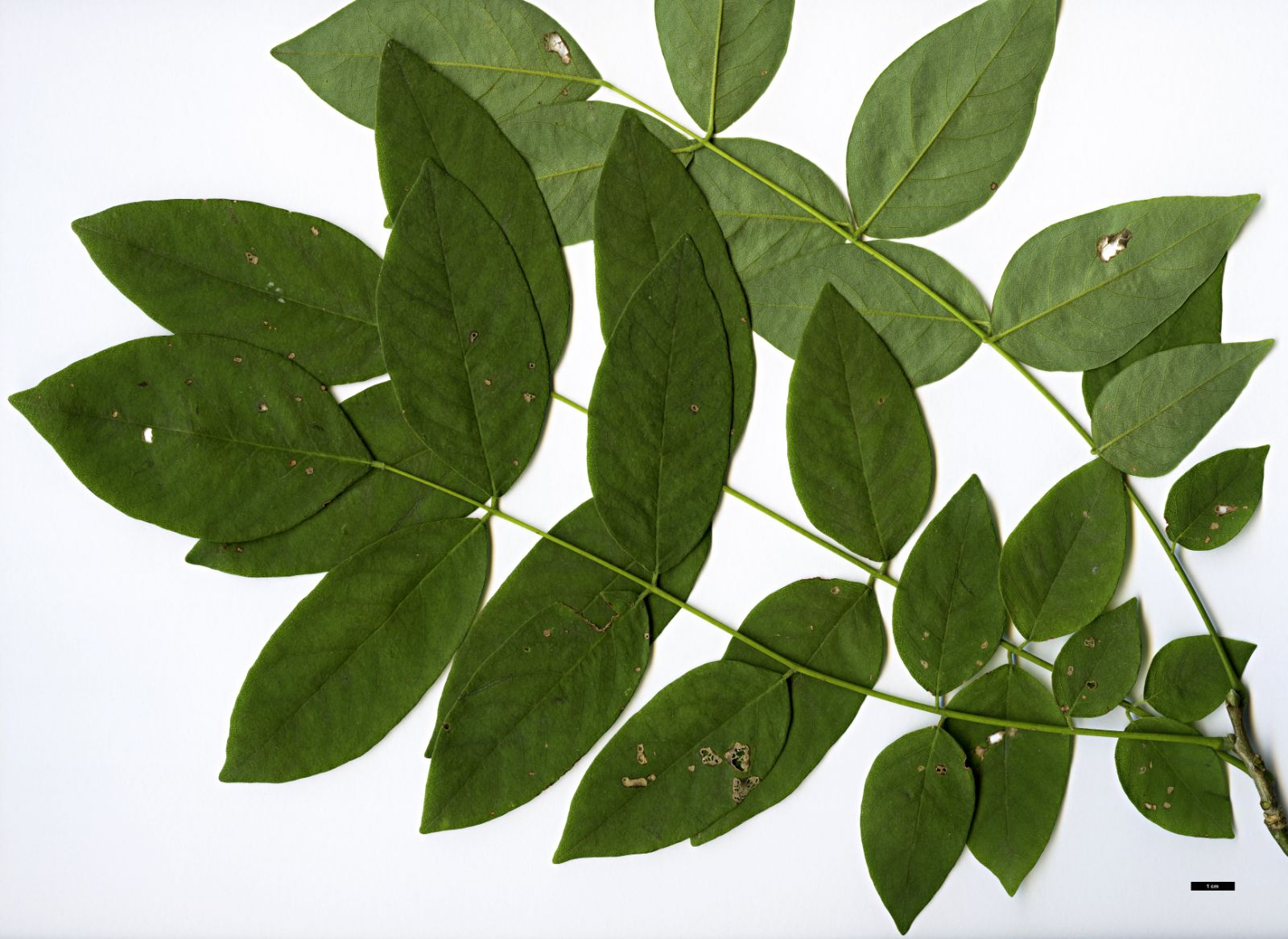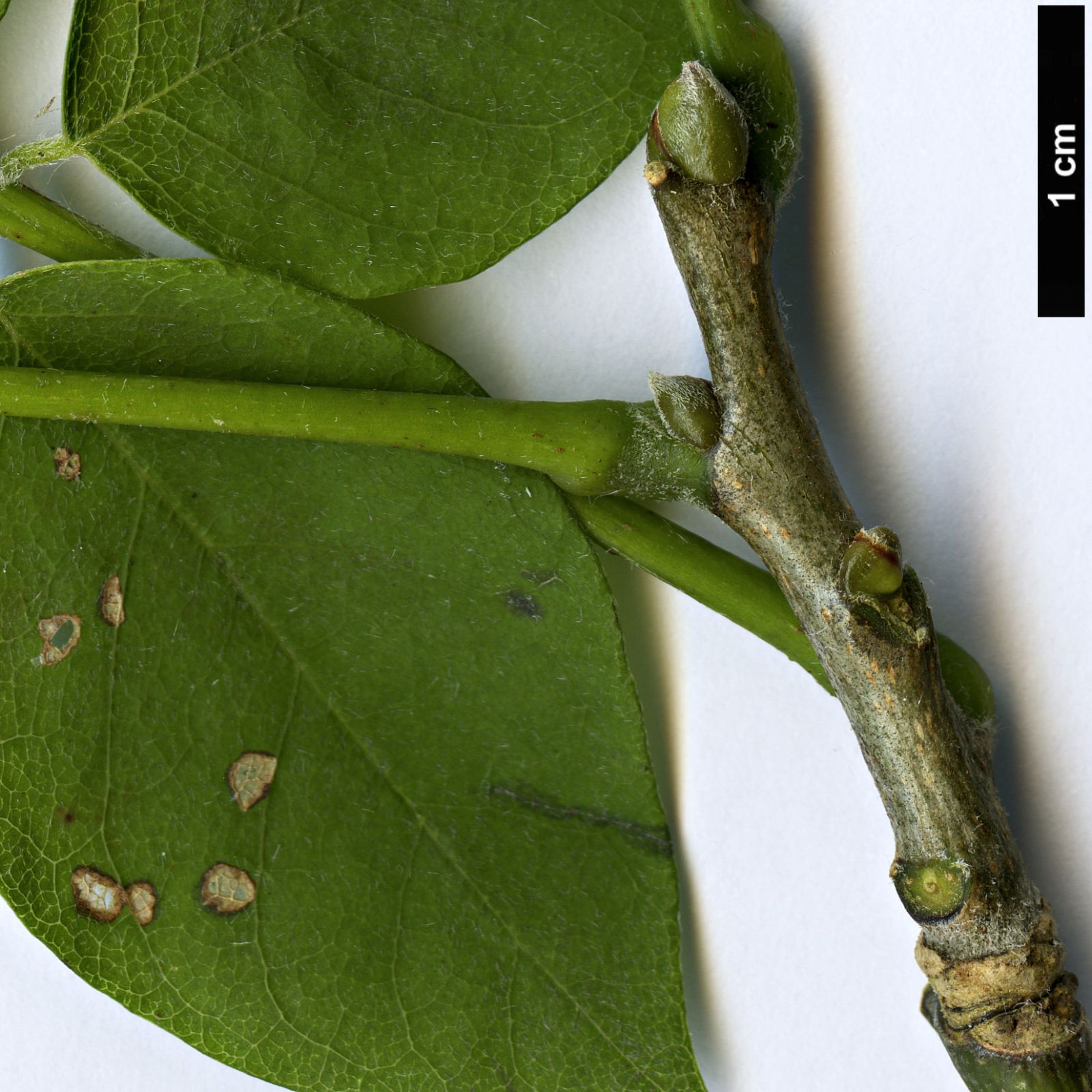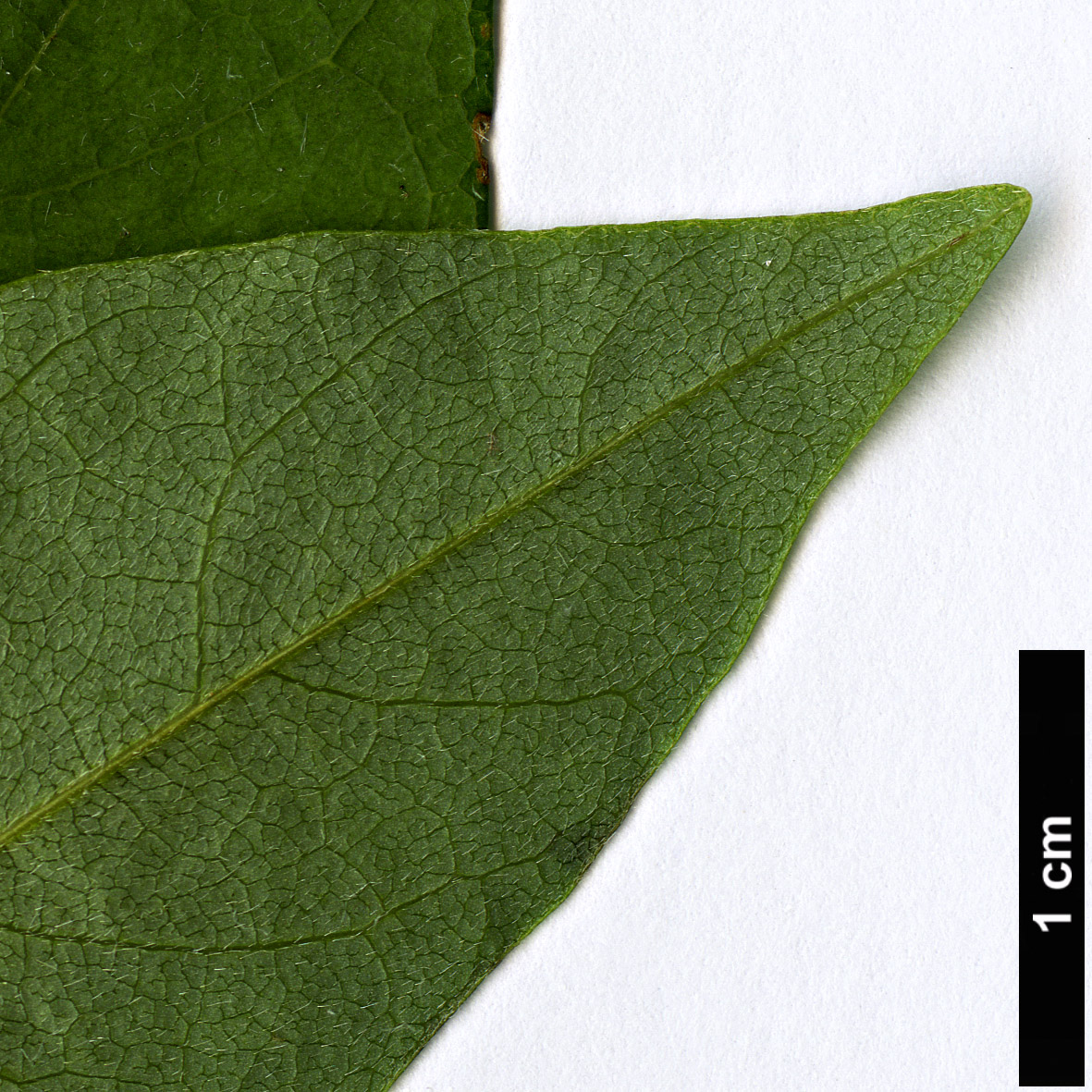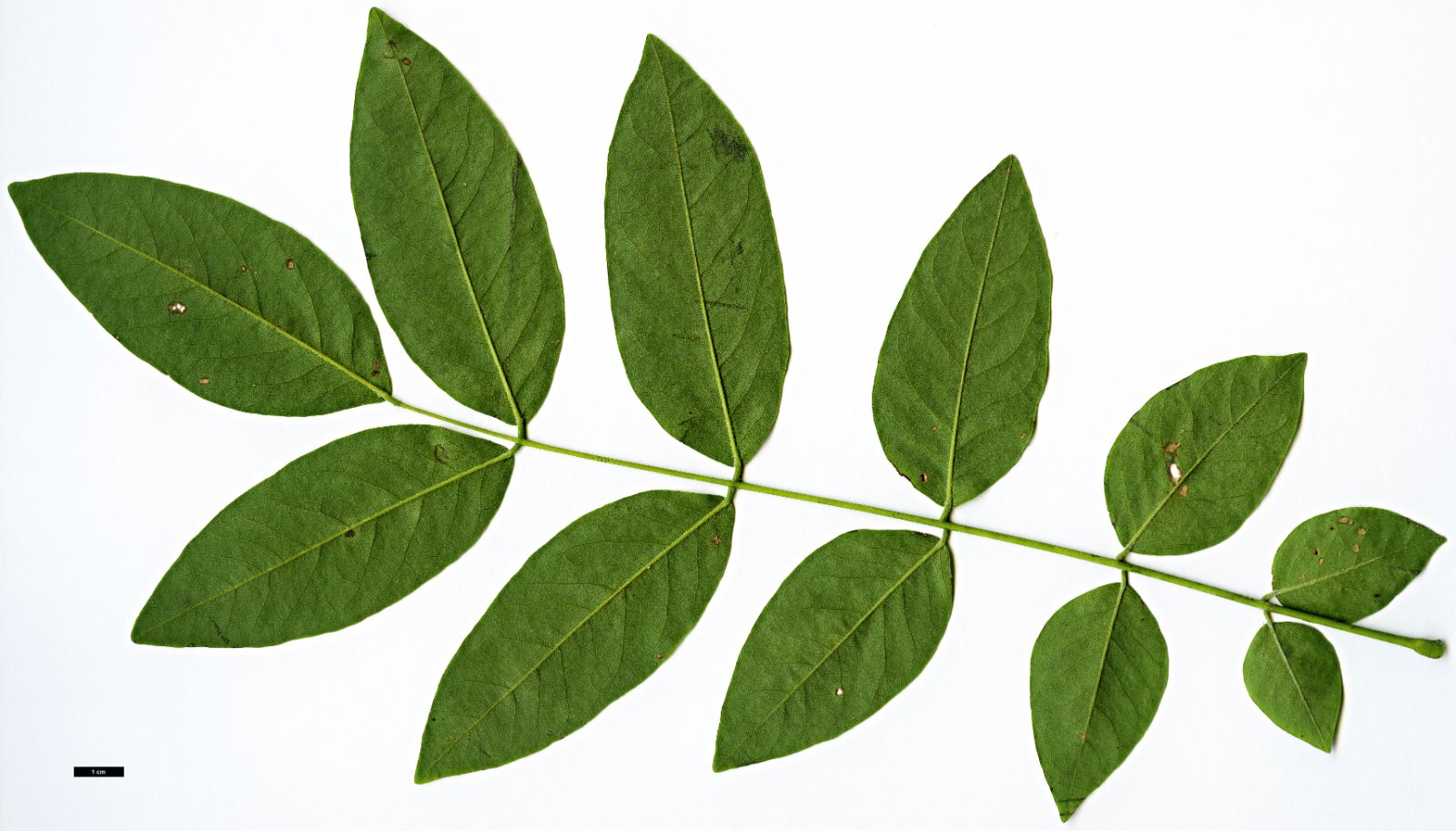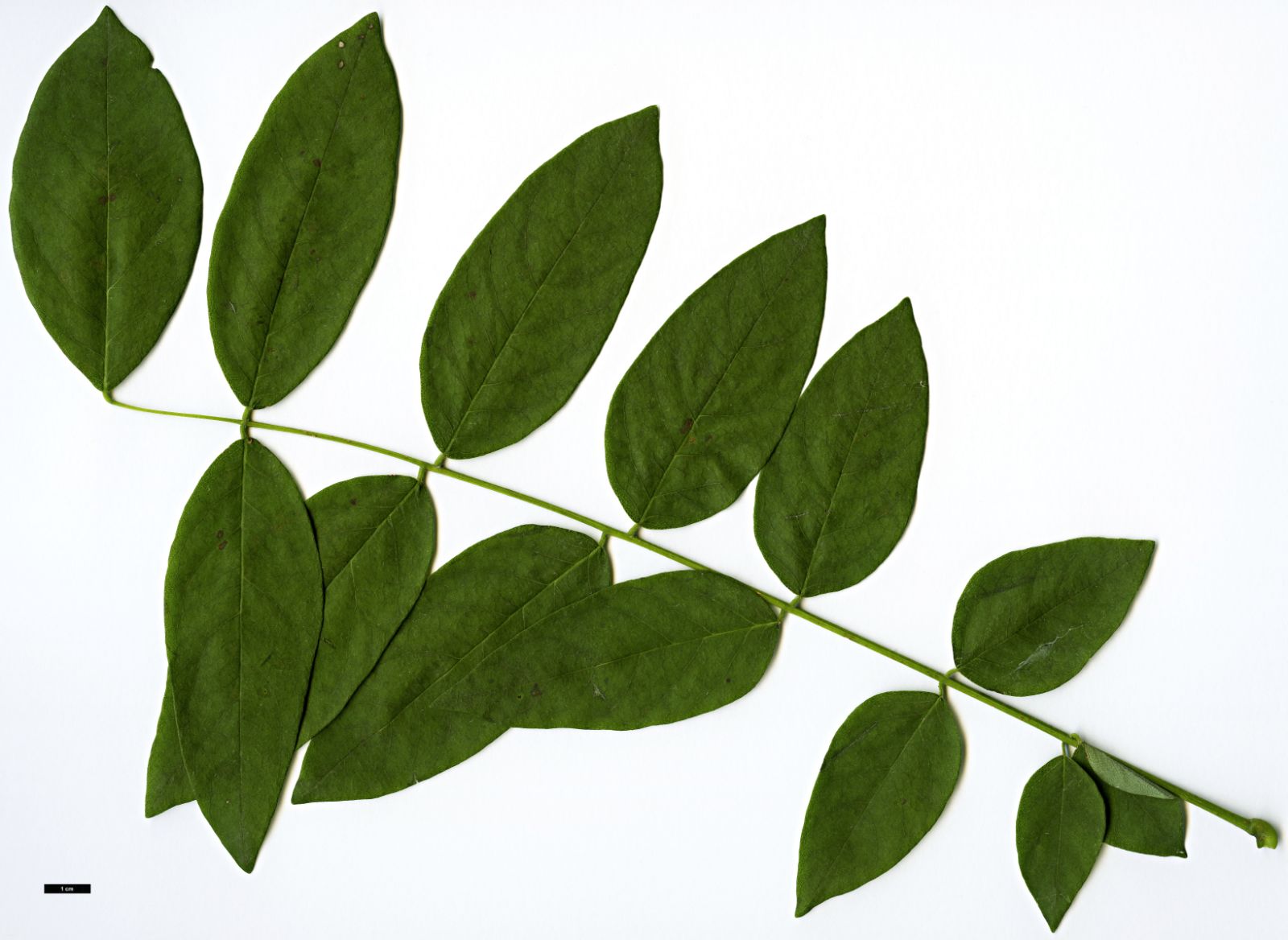Maackia hupehensis
Credits
Article from Bean's Trees and Shrubs Hardy in the British Isles
Recommended citation
'Maackia hupehensis' from the website Trees and Shrubs Online (treesandshrubsonline.
Genus
Synonyms
- Maackia chinensis Takeda
A deciduous flat-headed tree 16 to 50 ft (rarely more) high, the largest trees with a trunk 7 ft in girth; young shoots glabrous by summer. Leaves pinnate, 5 to 8 in. long, composed usually of nine to thirteen leaflets, the lower ovate and about 1 in. long, the others becoming larger and more oblong or oval in outline towards the end of the leaf and 13⁄4 to 21⁄2 in. long by 3⁄4 in. wide; they are bluntish at the apex, tapered to rounded at the base, silvery grey with down when young, remaining densely covered beneath with velvety appressed down; stalk 1⁄8 in. long, downy. Flowers opening in July and August on a terminal panicle 6 to 8 in. long and 4 to 5 in. wide, consisting of several cylindrical downy racemes densely crowded with flowers. These are a dull white, 3⁄8 in. long; calyx bell-shaped, toothed, 1⁄8 in. long and, like the short flower-stalk, downy.
Native of Hupeh and Szechwan, China; discovered by Wilson and introduced by him in 1908. He observes that it is common in W. Hupeh in moist open country, but that large specimens are rare. It flowered in the Arnold Arboretum, Mass., in 1920, and at Kew four years later. Its chief beauty is in the silvery sheen of the young unfolding leaves; the flowers are of little account. It appears to be closely related to M. amurensis, differing in the smaller shorter leaves and in the narrower more downy leaflets. There is an example about 30 ft high at Wakehurst Place in Sussex. Another at Kew, pl. 1911, measures 15 × 2 ft (1968): this is from Wilson’s original introduction of 1908 (W.709).

